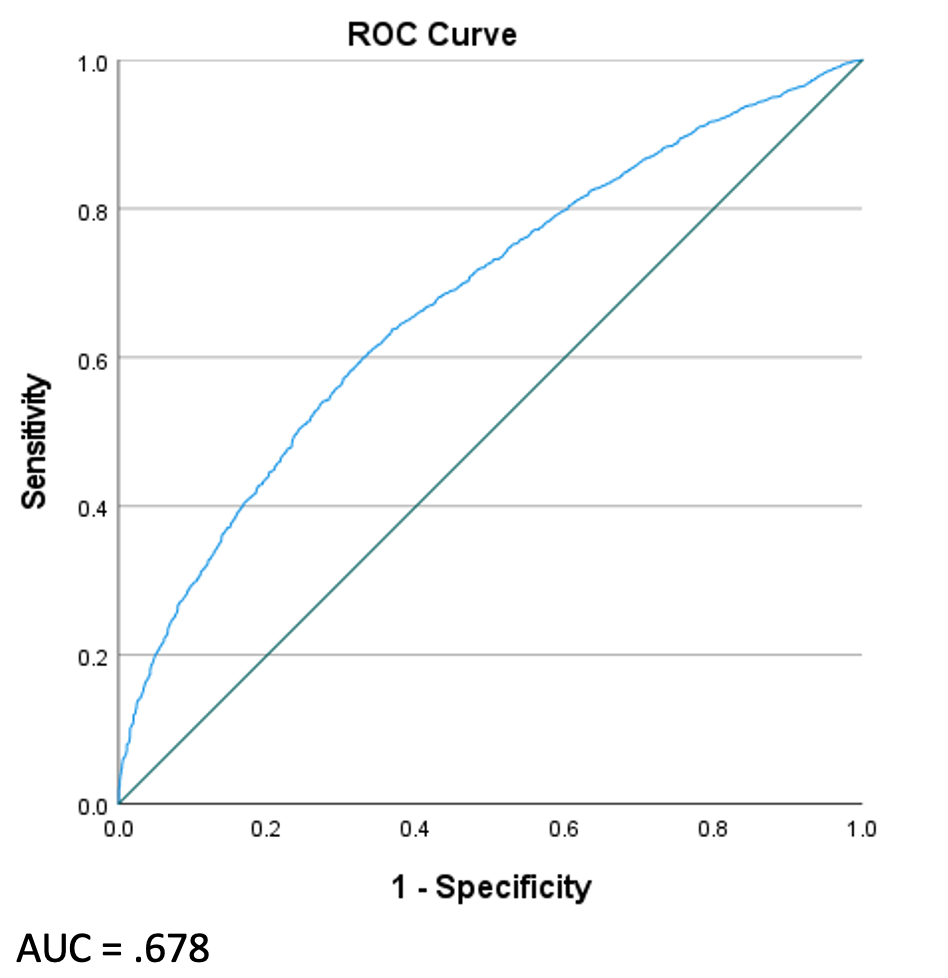Back
Poster, Podium & Video Sessions
Moderated Poster
MP58: Prostate Cancer: Detection & Screening VII
MP58-04: PSA Density Directly Correlates with PI-RADS Lesion Score on Prostate MRI
Monday, May 16, 2022
1:00 PM – 2:15 PM
Location: Room 228
Clay Martin*, Jacob Gaines, Eric Macdonald, Max Kuster, Simon Hall, New Hyde Park, NY
- CM
Clay D. Martin, MD
The Smith Institute for Urology
Poster Presenter(s)
Introduction: The field of prostate cancer is constantly evolving alongside a modern focus on minimization of adverse treatment effects, accurate risk-stratification and avoidance of overdiagnosis and overtreatment. With the advent of multiparametric prostate MRI, prostate biopsies have become more precise. However, because MRI remains expensive and difficult to interpret its use should be targeted to patients likely to have a positive finding. Here we assess the ability of PSA Density (PSAD) to predict MRI findings.
Methods: Billing data was used to retrospectively identify 870 men who had undergone a prostate MRI with an associated PSAD at a single institution from 2015 through 2020. PSAD and PI-RADS lesion scores were collected for each patient. ROC curves using logistic regression were created to predict the PIRADS score based on PSAD.
Results: PSAD was shown to be significantly higher with PI-RADS lesions of increasing scores. The mean PSAD for lesions by PI-RADS scores 1 through 5 were .125, .134, .159, .188 and .311, respectively. PI-RADS 1 and 2 lesions were associated with a statistically significantly lower PSAD than PIRADS 3 lesions (mean 0.132 vs 0.158, t value –2.613, p = .009). PI-RADS 3 lesions were associated with lower PSAD than PI-RADS 4 lesions (mean 0.158 vs 0.188, t value –2.371, p = .018). PI-RADS 5 lesions were associated with higher PSAD than PI-RADS 4 lesions (mean 0.311 vs 0.188, t value –5.617, p < .001).
These data suggest an optimal cut-off point for PSAD as determined by a Youden's J statistic of 0.271 at a threshold PSAD = 0.129 for differentiating PI-RADS scores 1 and 2 from those 3 and higher. At this cut-off, sensitivity = 60%, specificity = 67.1%, positive predictive value = 70.5%, negative predictive value = 56.2%.
Conclusions: PSAD is a meaningful measure in the screening and diagnosis of prostate cancer. These data suggest that PSAD directly correlates with PI-RADS lesion score. This trend suggests that PSAD could be used as a part of an algorithm to aid in decision making when considering prostate MRI.
Source of Funding: N/A

Methods: Billing data was used to retrospectively identify 870 men who had undergone a prostate MRI with an associated PSAD at a single institution from 2015 through 2020. PSAD and PI-RADS lesion scores were collected for each patient. ROC curves using logistic regression were created to predict the PIRADS score based on PSAD.
Results: PSAD was shown to be significantly higher with PI-RADS lesions of increasing scores. The mean PSAD for lesions by PI-RADS scores 1 through 5 were .125, .134, .159, .188 and .311, respectively. PI-RADS 1 and 2 lesions were associated with a statistically significantly lower PSAD than PIRADS 3 lesions (mean 0.132 vs 0.158, t value –2.613, p = .009). PI-RADS 3 lesions were associated with lower PSAD than PI-RADS 4 lesions (mean 0.158 vs 0.188, t value –2.371, p = .018). PI-RADS 5 lesions were associated with higher PSAD than PI-RADS 4 lesions (mean 0.311 vs 0.188, t value –5.617, p < .001).
These data suggest an optimal cut-off point for PSAD as determined by a Youden's J statistic of 0.271 at a threshold PSAD = 0.129 for differentiating PI-RADS scores 1 and 2 from those 3 and higher. At this cut-off, sensitivity = 60%, specificity = 67.1%, positive predictive value = 70.5%, negative predictive value = 56.2%.
Conclusions: PSAD is a meaningful measure in the screening and diagnosis of prostate cancer. These data suggest that PSAD directly correlates with PI-RADS lesion score. This trend suggests that PSAD could be used as a part of an algorithm to aid in decision making when considering prostate MRI.
Source of Funding: N/A


.jpg)
.jpg)